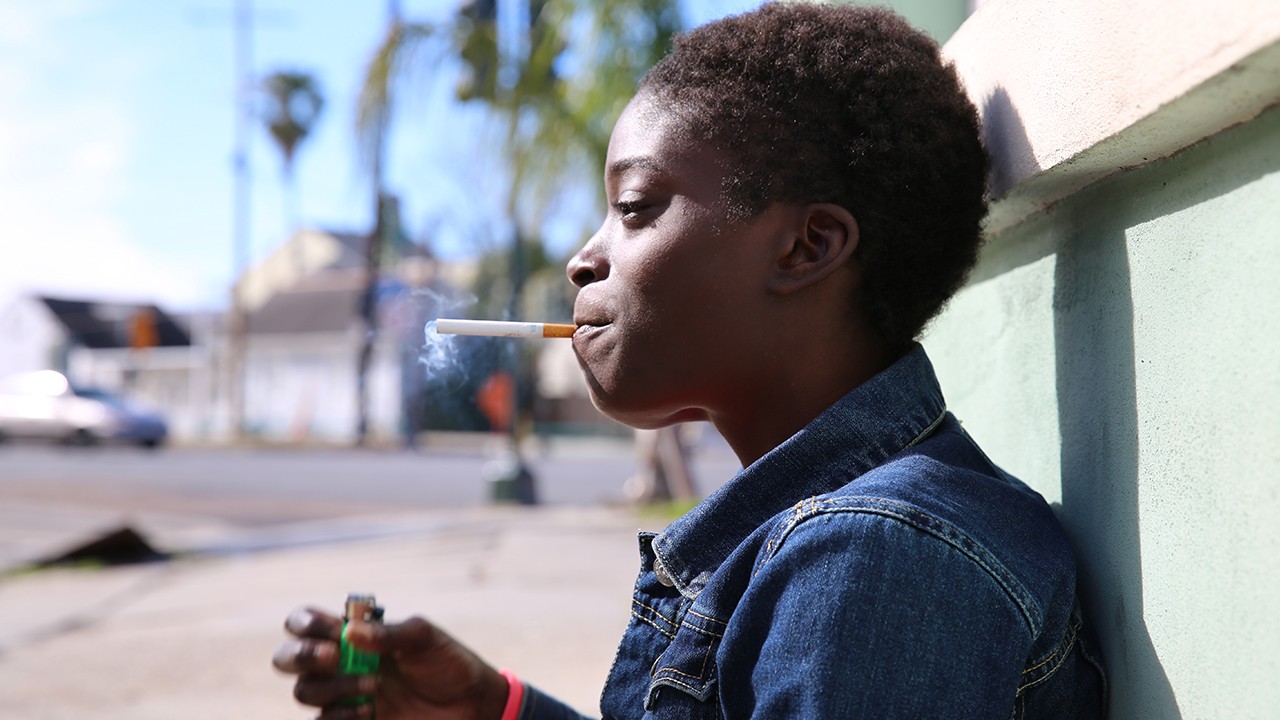Image via VICE
Documentary filmmakers Craig and Brent Renaud have spent the last decade traveling the world, chronicling the struggles and triumphs of some of the earth’s most vulnerable populations. Now, the Peabody Award-winning duo is back with SHELTER , a moving portrait of homeless youth living in New Orleans. The film focuses on the efforts of the Louisiana chapter of Covenant House, a homeless youth shelter devoted to housing and supporting kids who have run out of options.For their film, the Renaud Brothers spent a year in New Orleans with the residents and staff of Covenant House, getting to know their subjects and filming their lives. The documentarians employed their signature vérité style to create stunning and intimate portraits of youth struggling on the fringes of society. The resulting film gives visibility and dignity to a population which is too often ignored.We got in touch with Jim Kelly, the director of Covenant House, and met with them. Jim took a leap of faith, and said, "We trust you to tell our kids’ stories, and respect them." We were able to film super intimate stuff and form close relationships with the kids there. It was amazing once we got started.
Check out the entire VICE documentary below:
When you’re spending a year immersed in an environment like the Covenant House, how do you decide where to focus the narrative and whose stories you want to tell?It’s both a very simple approach and a very difficult one. Simple in the sense that we really just try to dive in: we don’t have a production schedule at all, we just show up and we basically live with our characters. We’re there for long periods of time, so that we can capture everything in real time and get that verité feel. With the Covenant House, we set up shop there and didn’t leave. So it’s a simple approach, and it’s really just about becoming part of the environment and trying to get your subjects to trust you. But it’s also difficult because crazy stuff happens to you during the production. I got jumped by one of the residents who was schizophrenic and beat up pretty badly, but I showed up again the next day to film. It’s just part of what we do.We start a film with a very loose idea of the subject — in this case, we knew the film was going to be centered around Covenant House. But then a character will wander in, and you realize "Okay, this is our central character because of her story," and you latch onto that person and try to stick with them.How do you hope this film makes an impact?I want to inspire compassion for the most vulnerable part of our society. I want to take the audience on a long enough journey so that they can really understand how kids end up in this predicament and how much help they actually need. I also really hope that Covenant House gets a lot of support out of this film.The Covenant House has main fundraiser every year called the Sleep Out, and everyone does a sleep out at Covenant House, and they hear from the residents about what it means to be homeless. So I’m really hoping that the film helps raise a tremendous amount of money for Covenant House, all over the country.This interview has been edited for brevity and clarity.Covenant House needs your support. You can make a difference by donating to their organization. Also, you can participate in a Sleep Out Fundraiser to raise awareness and money for Covenant House's important mission.
Advertisement
VICE Impact spoke with Craig Renaud about his experience creating the film, how he hopes to inspire audiences, and what we can all do to help the homeless in America.VICE Impact: What were the origins of this project? How did you decide you wanted to document the lives of homeless youth in America?Craig Renaud: It started with Last Chance High , because we focused on a special needs school in Chicago with kids with pretty extreme behavioral issues, and we wanted to do more about mental illness and youth. So we started doing research and we came across the [homeless youth shelter] Covenant House in New Orleans. Many of the kids there got kicked out of their houses because of mental illness—oftentimes extreme mental conditions start at 18, 19, 20 years old. Covenant House is an emergency shelter for them, so it’s like being on the front lines of mental illness with youth."There’s not a more vulnerable part of our society than these kids, so we tried to tell their story respectfully and carefully."
Advertisement
Check out the entire VICE documentary below:

When you’re spending a year immersed in an environment like the Covenant House, how do you decide where to focus the narrative and whose stories you want to tell?It’s both a very simple approach and a very difficult one. Simple in the sense that we really just try to dive in: we don’t have a production schedule at all, we just show up and we basically live with our characters. We’re there for long periods of time, so that we can capture everything in real time and get that verité feel. With the Covenant House, we set up shop there and didn’t leave. So it’s a simple approach, and it’s really just about becoming part of the environment and trying to get your subjects to trust you. But it’s also difficult because crazy stuff happens to you during the production. I got jumped by one of the residents who was schizophrenic and beat up pretty badly, but I showed up again the next day to film. It’s just part of what we do.We start a film with a very loose idea of the subject — in this case, we knew the film was going to be centered around Covenant House. But then a character will wander in, and you realize "Okay, this is our central character because of her story," and you latch onto that person and try to stick with them.
Advertisement
For SHELTER it was a girl named Elizabeth. Jim had been telling me about Elizabeth for a while, and he said, "There’s this girl that I really care about and I’m afraid she’s gonna die on the streets. She’s severely schizophrenic." Her story was powerful, and she really became the focus of our film.The first month of filming with her we were trying to get her to trust us enough. She doesn’t trust anybody—she’s been abused her whole life. So that was probably one of the most difficult things—to film with somebody that’s been abused, and is so mentally ill. There’d be times where she would scream at us and tell us to get away and we would respect that and leave her. Then the next time she’d be as sweet as she could possibly be, just normal Elizabeth, and she’d really opened up to us.As filmmakers, you really start caring about these young people. There’s not a more vulnerable part of our society than these kids, so we tried to tell their story respectfully and carefully."It’s really just about becoming part of the environment and trying to get your subjects to trust you."
Another thing that really comes through in the film is just how deeply the staff cares for the many homeless youth that come through the Covenant House. What drives the staff’s devotion and compassion, and how have their efforts been successful?The reason that the staff is so effective is that they’re all in. Everyone loves helping these kids. They don’t just help the kids from 9 to 5—they live it and they breathe it. I don’t think there’s a single staff person there who’s there just for a paycheck, because you don’t get paid a lot if you work at one of those places.
Advertisement
Also, they take such a multilayered approach. When a kid comes in, they get all the services they need right there. The kid comes in for respite, and there’s a health clinic where they’ll immediately do a health checkup with the kid and see if there are any illnesses or medications they need to be concerned about. They’ve got social workers, they’ve got psychiatrists. All that is right there. That’s why I think they’re amazing.You mention mental illness as frequently being a common denominator among homeless youth. Why do you think this is such an issue?I think if you come from a middle class or upper class family, and you have a mental illness, it’s a lot more likely that you’re gonna get help and counseling and proper medications. What you see in the Covenant House is people from lower income families whose families don’t even understand what’s going on with the kids—when the mental illness kicks in, the kids get kicked out. Or the community’s not familiar with mental health treatment or can’t afford it. Poverty complicates the mental illness aspects of homelessness.The other thing I didn’t really realize until I started filming there, is that a lot of those kids are self-medicating with some sort of drug. So then you’ve got a problem with drug abuse and the problem of mental illness. And you can’t really treat the mental illness with the kids abusing drugs. You’ve got to get them sober to be able to treat them."What you see in the Covenant House is people from lower income families whose families don’t even understand what’s going on with the kids—when the mental illness kicks in, the kids get kicked out."
Advertisement
